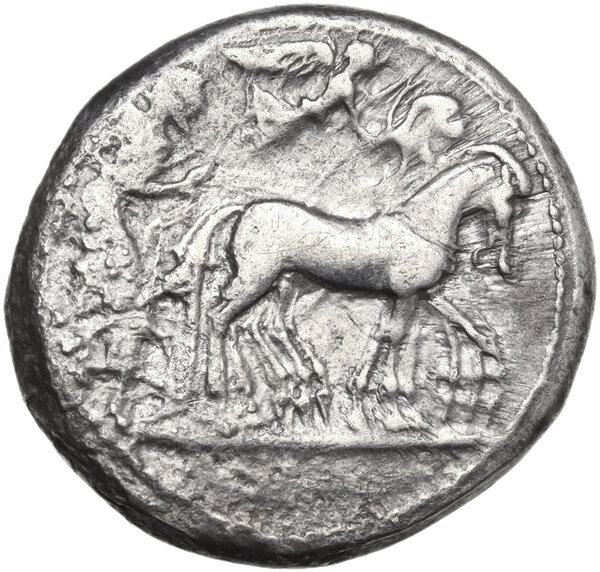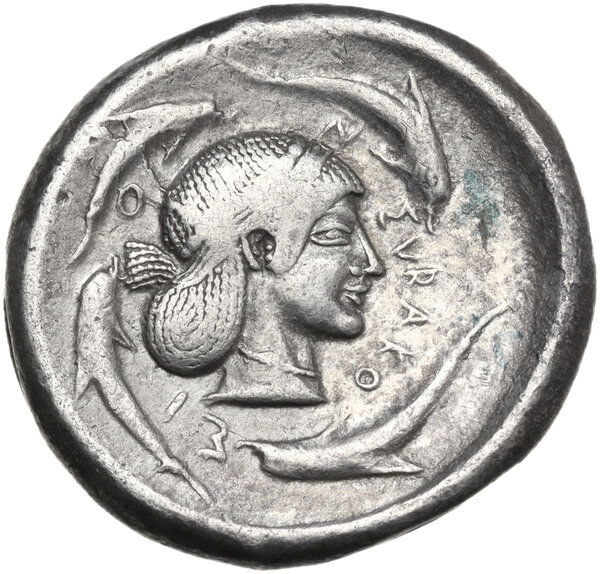

Lotto 118:
Sicily. Syracuse. Gelon I (485-478 BC). AR Tetradrachm, c. 480-478 BC. Obv. Charioteer driving quadriga right; above, Nike flying right, crowning horses with wreath. Rev. ΣYRAKO-ΣI-O-N. Diademed head of Arethusa right; four dolphins around. Boehringer Series IV,45; HGC 2 1306; Jameson 742; McClean 2601. 17.15 g. 25.00 mm. Sound metal. A choice example, well centred, brilliant and lightly toned. Good VF. Under the rule of Gelon I (485-478 BC), Syracuse not only began to be the dominant power in Sicily, but won a major international victory against the Carthaginians at Himera in 480 BC, supposedly on the same day that the Persians were defeated at Salamis. To achieve this success, the Syracusan mint greatly increased its output of coinage, mostly tetradrachms, to provide funds for war. These issues, however, were archaic in style, like this coin. However, the wealth and international renown that Syracuse gained following Himera created a long-term cultural benefit for the area, since mainland Greece saw it not as a western backwater, but as a bastion of Greek ideals against the barbarians. Scientists, poets, and artists, especially engravers, were now encouraged to emigrate to the city, bringing with them the experimental concepts then appearing in mainland Greece. Gelon’s victories provided the financial means for his successors to make use of these talented individuals to enhance the renown of Syracuse as one of the main cultural centers of the Greek world. Since the issuing of coinage was an important part of maintaining Syracusan power, it now also became the vehicle by which the city could demonstrate its importance as a center for new intellectual and cultural ideas. As the tetradrachm was the denomination that was used for large-scale payments and appeared to a wide audience of both Greeks and non-Greeks, it became the canvas upon which the new artistic concepts of classical art were tried. Syracuse’s success with classical style tetradrachms expanded to the city’s other denominations. Elsewhere in Sicily and Magna Graecia, cities wishing to keep in cultural step adopted the classical style for their coinages. Thus, by the beginning of the fourth century BC, the coinage of Syracuse and Sicily became recognized as masterpieces of Classical Greek numismatic art. (CNG 96, 2014, 12 note).
Base d'asta € 800
Prezzo attuale € 1300
Offerte: 8
Lotto non in vendita
Prezzo attuale € 1300
Offerte: 8
Lotto non in vendita





